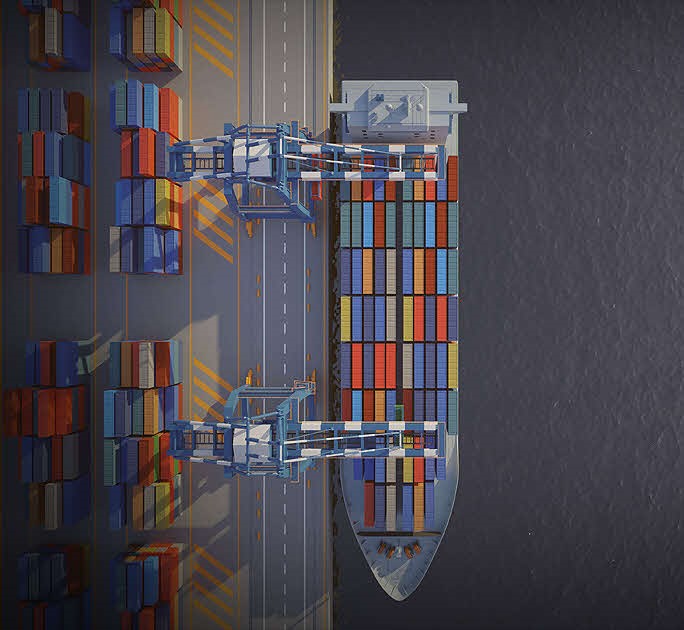Asia's Supply Chain Solutions at Forefront of Digital Growth
COVID-19 has made it clear that digitalisation is imperative for organisations to survive and thrive. As the pandemic accelerates global adoption of digital supply chain solutions, Asia is emerging as a catalyst for digital transformation and a beneficiary of economic growth, says Mark Troutman, Group Head of Sales, Global Transaction Services, at DBS Bank.

The COVID-19 crisis has created a need for contact-free interaction between customers, suppliers and employees, directly impacting business strategy, sales transactions, trade finance processes and treasury operations. As a result, many organisations have accelerated their digitalisation plans and treasury professionals are leveraging technology to overcome supply chain disruption – from API-led connectivity to enable remote engagement and eliminate manual workflows in the order-to-settlement journey.
Amid all these trends, Asia – spurred by its relatively quick recovery – is at the forefront of global digital transformation and poised to benefit economically from post-pandemic opportunities in Asia.
“There is a serious move to digitalisation and we are here to help,” confirms Troutman. “We are seeing a particularly notable swing amongst organisations operating in Asia.” And within this new normal landscape, he believes banks are playing a greater role in helping businesses adapt to the reality of a post-pandemic world.
A new global supply chain ecosystem
As organisations recover from the effects of the pandemic, there is a need to consider their broader supply chain needs. This is where banks can take a more proactive and far-reaching leadership role in driving digital transformation for their clients.
“Banks can leverage existing strengths of connectivity across the supply chain ecosystem, linking manufacturing lines to supplier lines with data, along with their ability to help finance and deliver on logistics needs in a contact-free manner,” explains Troutman.
APIs are also key in the digital transformation of supply chains; they allow organisations to upload trade applications digitally and directly from their own internal platforms, offering an alternative solution to replace wet signatures, with enhanced real-time status notification capabilities. Recently, DBS offered same-day financing to distributors of products made by Haier, the Chinese electronics manufacturer, via Haier’s own digital supply chain platform. Through a series of APIs, DBS enabled distributors to obtain financing digitally and Haier to sell more products.
The digital priority
Digitised supply chains offer greater efficiency and more robust processes, ensuring access to fast and fluid working capital for all parties and enhancing connectivity across a horizontal ecosystem. Each step in the client journey can be digital – from online account opening and digital onboarding of suppliers, to uploading or presenting transactional documents, online platforms, managing application and resubmission processes, as well as receiving financing.
Shorter processing time is another benefit. For example, DBS completed the first transaction through the CamelONE Trade Finance portal early in 2020, becoming the first Singapore bank to join Contour’s network, enabling shorter settlement times, less paperwork and simpler trade processes for customers.
Efficient liquidity management - crucial during times of crisis – is improved by instant settlement, automated reconciliation and greater visibility of the organisations’ cash. In the wake of COVID-19, banks enabled digital solutions for organisations to leverage surplus funds across entities, enabling treasurers to better manage borrowing costs, and to enjoy greater transparency over transactions and increased control over cash as the result of more instant payment transactions.
Asia at the centre of digital transformation
Troutman believes Asia, with its general resilience based on economic strength, robust domestic and regional demand and agility in digital adoption, is well-positioned to lead its Western counterparts in supply chain transformation and post-pandemic economic recovery.
“The overall recovery is slow, especially for major trading partners in Europe and the US,” explains Troutman. “There is also more economic interdependence between Asian countries as geopolitical and economic forces are impacting traditional relationships.”
As organisations look to minimise supply chain disruption and diversify production bases, this could mean a shift in procurement to countries such as Vietnam and India, where labour costs remain relatively low. In addition, organisations that built out their local and regional supply chains within Asia can benefit from shortened supply chains and expedited transactions as well as strong demand from a demographic that is highly receptive to digital services.
With attractive growth opportunities, Asia is expected to remain a nexus for trade, while propelling digital transformation across global supply chains in a post-pandemic world. This bodes well for organisations able to tap this potential first-hand and ready to embark on the next phase of their journey. “Organisations that prioritise digital transformation and look forward to the ‘new normal’ will position themselves to be more relevant, and improve their relevance in the post-pandemic world,” concludes Troutman.
This article was first published in Global Finance in July 2020.
The information herein is published by DBS Bank Ltd. (“DBS Bank”) and is for information only.
The information is not directed to, or intended for distribution to or use by, any person or entity who is a citizen or resident of or located in any locality, state, country or other jurisdiction where such distribution, publication, availability or use would be contrary to law or regulation
DBS Bank Ltd. All rights reserved. All services are subject to applicable laws and regulations and service terms. Not all products and services are available in all geographic areas. Eligibility for particular products and services is subject to final determination by DBS Bank Ltd and/or its affiliates/subsidiaries.



